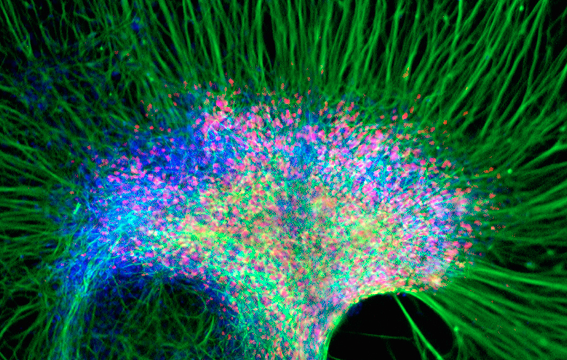3D printing may be used as powerful tool for neural tissue engineering according to new research.
Degenerative diseases or trauma are the primary cause of neural damage. Experts believe that in the U.S. alone there are approximately 2.8 million cases of traumatic brain injury every year. Neural regeneration, the regrowth or repair of nervous tissues, cells or cell products, can help repair this damage. However, repairing large areas of damage is a challenging task.
Scientists from the George Washington University have found that a 3D printed neural scaffold together with LLLT will, “generate a new strategy to repair neural degeneration.”

Researchers modified an SLA 3D printer
According to the research, 3D printing is an attractive option for tissue regeneration because of,
Its capability of spatially controlling the placement of functional components to generate a complex 3D scaffold. This process offers a patient-specific design feasibility, enabling researchers to tailor 3D printed implants to specific injuries, further increasing probability of complete recovery.
Furthermore, 3D bioprinting is a more favorable approach than traditional methods of scaffold fabrication because it allows, “generating controlled porosity and mechanical properties by adjusting the computer-aided design and formulation of printable materials.”
To prepare the neural scaffolds the researchers developed a stereolithography-based 3D printer based on the Printrbot platform. One vital modification to the printer was the addition of a 110 µm fiber optic coupling with a solid-state UV laser source (355 nm). Using the customised 3D printer a “combination of natural GelMA and synthetic PEDGA” was printed in the desired shape.

Enhanced cell proliferation after low-level light stimulation
The 3D printed neural scaffolds were seeded with Neural Stem Cells (NSCs) and exposed to low-level light every other day for 15 seconds. The proliferation of cells was then measured and the researchers found a substantial increase when measured against the control group.
When compared with the control test which lacks the LLLT treatment, the cells stimulated with laser for 15 s exhibited the highest cell proliferation rate at 24 h of culture after stimulation, namely, a 44.4% higher cell proliferation.
The success of the study “may pave a new way for development of new generation neural therapy,” according to the research team.
Illustrating the multi-disciplinary approach that 3D printing research involves, the research was a collaborative effort by the several departments at the George Washington University. Specifically the Departments of Mechanical and Aerospace Engineering, Electrical and Computer Engineering, Biomedical Engineering and the Department of Medicine.
The research was conducted by Wei Zhu, Jonathan K. George, Volker J. Sorger, and Lijie Grace Zhang. “3D printing scaffold coupled with low level light therapy for neural tissue regeneration” is published in the Official Journal of the International Society for Biofabrication.
Recently, 3D Printing Industry reported on how 3D Systems are working on a bioprinting project with United Therapeutics and how Japanese researchers are 3D printing liver cells.
For all the latest 3D printing news, subscribe to our free newsletter here and follow our active social media accounts.
Make sure you vote in the 3D Printing Industry Awards where our readers have nominated the most innovation and advanced enterprises in the additive manufacturing industry.
Featured image shows AI artwork by Google’s Deep Dream project using neural networks.



